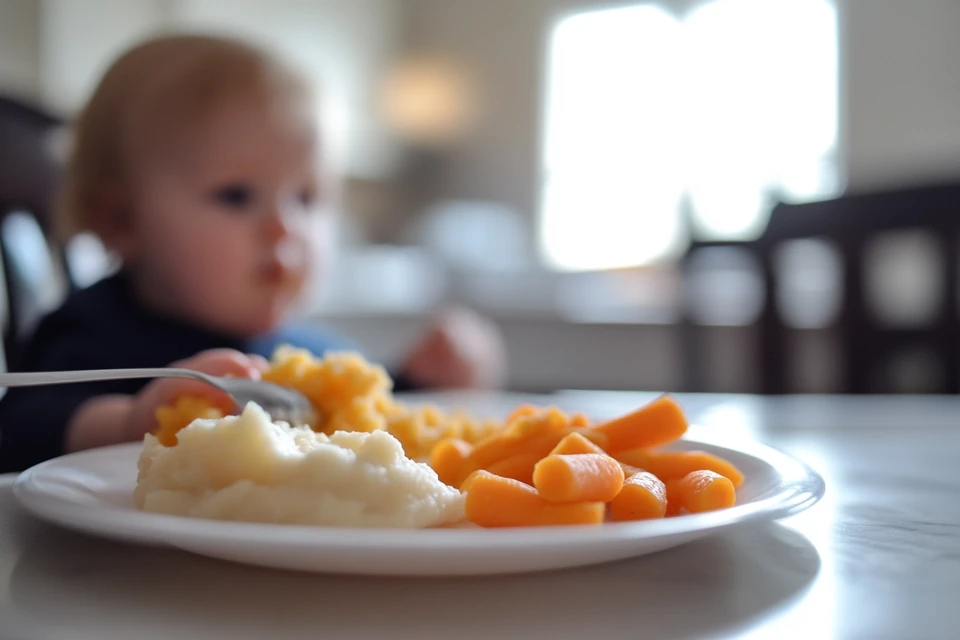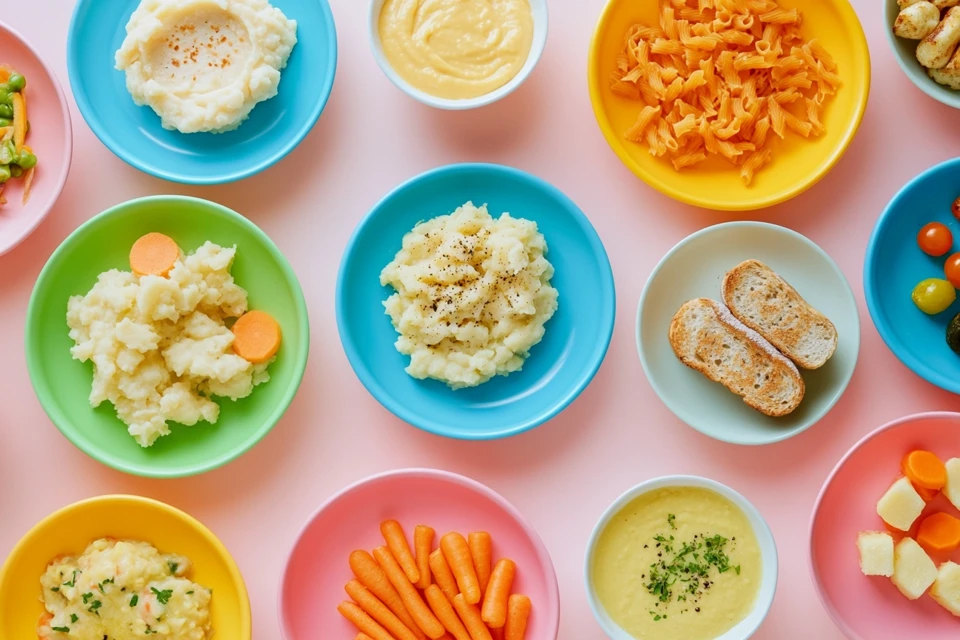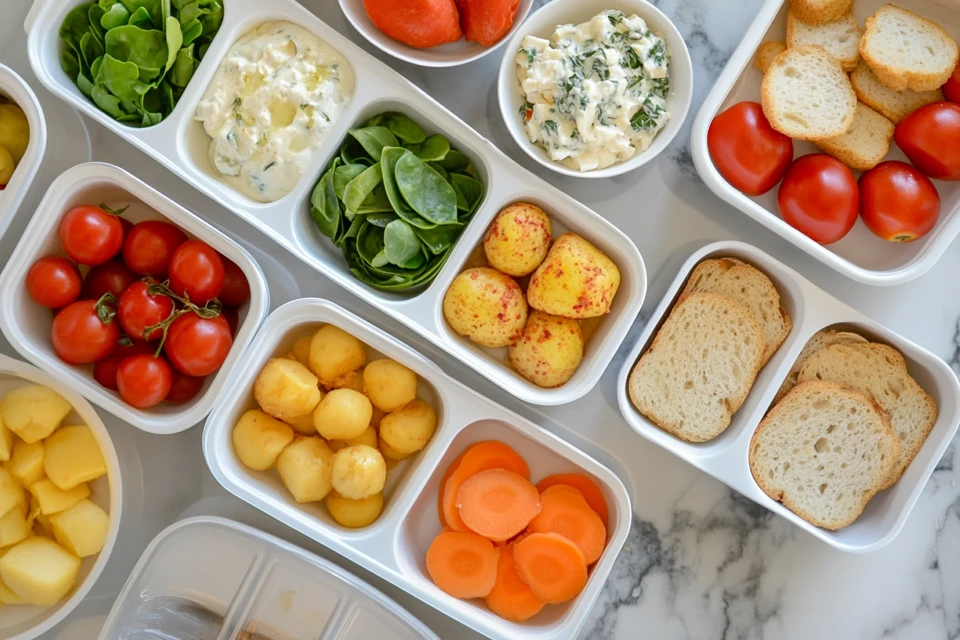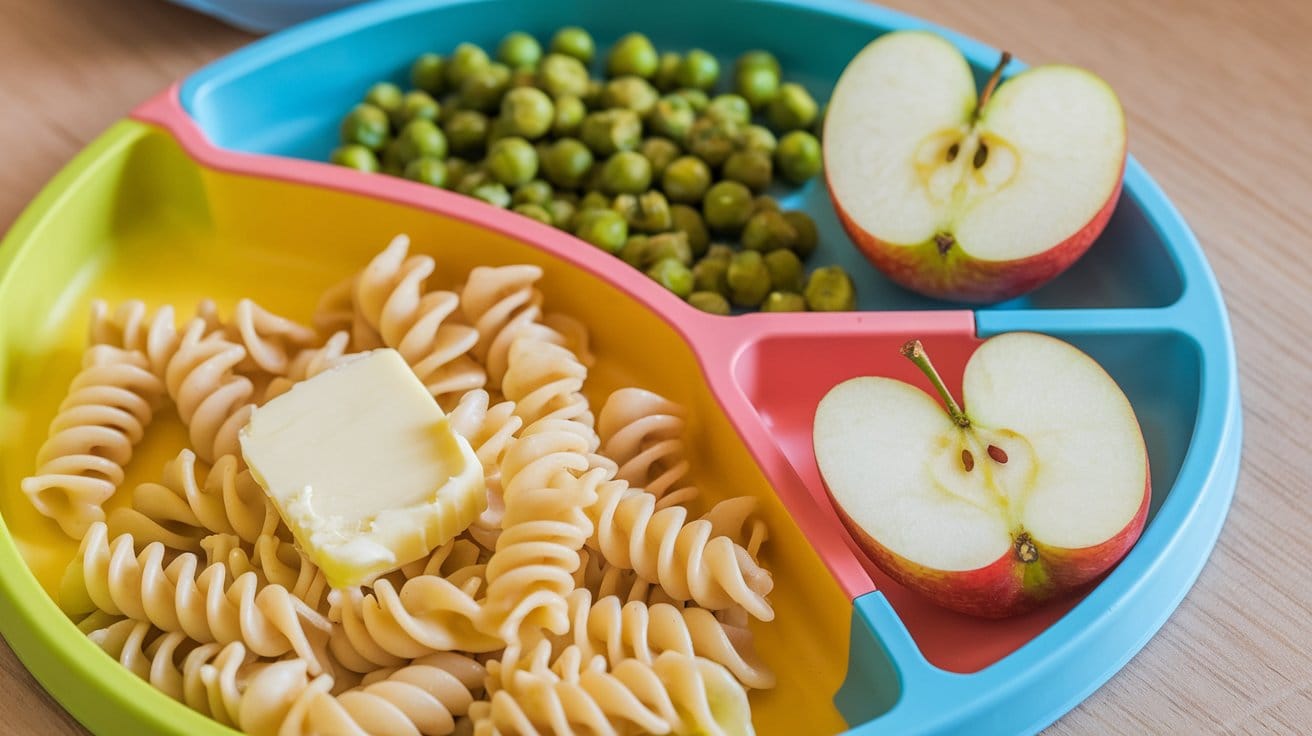Every parent has been there—spending hours making a delicious meal, only for your toddler to take one look at it, scrunch up their nose, and refuse to eat. If your little one prefers plain, simple foods, you’re not alone! Many toddlers go through a phase where they prefer “bland” meals over flavorful, spiced dishes. But what exactly is a bland toddler lunch, and is it healthy?
In this guide, we’ll break down what makes a toddler’s lunch bland, why they prefer it that way, and how to keep these meals nutritionally balanced. Plus, we’ll share simple, delicious, and easy-to-make lunch ideas that even picky eaters will enjoy. Let’s dive in!

Why Some Toddlers Prefer Bland Food
If you’ve ever wondered, “Why does my toddler only eat plain pasta and toast?”—you’re not alone! This is a common phase that most toddlers go through.
Here are some key reasons why many toddlers prefer bland foods:
- Developing Taste Buds – Toddlers’ taste buds are still sensitive. Strong flavors, such as spicy or bitter foods, can overwhelm them.
- Texture Sensitivity – Some kids dislike foods with complex textures. A smooth, soft meal feels “safe” to eat.
- Fear of New Foods (Neophobia) – Many toddlers reject new foods simply because they’re unfamiliar. They stick to what they know!
- Digestive Sensitivity – Bland foods are easier on the stomach, making them ideal for kids with mild tummy troubles.
But here’s the big question—does “bland” mean unhealthy? Not at all! If done right, bland toddler lunches can be nutrient-packed while keeping things simple.
Common Problems with Toddler Lunches
Before we get into solutions, let’s address the struggles parents face with toddler meals.
1. Refusing to Eat New Foods
One of the biggest headaches? Getting a toddler to try something new! If you introduce a new food, they might shake their head, push it away, or even cry.
2. Nutrient Deficiency Risks in Bland Meals
Plain foods are great for digestion, but they can sometimes lack essential nutrients. Without enough variety, toddlers might not get the protein, vitamins, or fiber they need.
3. Balancing Taste and Nutrition
How do you keep food mild but still provide enough nutrition? That’s the challenge! It’s all about choosing the right ingredients and food combinations.
For more toddler lunch inspiration, check out 15 nutritious and fun toddler lunch ideas.
What Does a Bland Toddler Lunch Look Like?
So, what qualifies as a bland toddler lunch? It’s all about using gentle, easy-to-digest foods that are still nutritious.
✅ Safe and Gentle Ingredients for a Bland Lunch
Best Ingredients for a Bland Toddler Lunch:
- Soft-cooked vegetables (carrots, potatoes, peas)
- Plain rice or pasta
- Mashed or shredded chicken
- Scrambled eggs
- Bananas, applesauce, or mild fruits
- Greek yogurt
- Avocado
- Oatmeal
- Whole wheat toast
- Low-sodium cheese
🍽️ Best Cooking Methods for Easy Digestion
- Boiling & Steaming – Keeps food soft and easy to chew.
- Mashing & Blending – Reduces texture issues.
- Light Baking – Makes veggies soft without removing nutrients.
- Avoid Frying & Spicy Seasoning – Can be harsh on tiny tummies.
Top 10 Bland Toddler Lunch Ideas
Now that we know what a bland toddler lunch should include, here are some easy, healthy, and mild-flavored meal ideas:

🥄 1. Mashed Sweet Potato with Soft Chicken
Ingredients:
- ½ cup mashed sweet potato
- 2 tbsp shredded cooked chicken
- 1 tsp olive oil
How to Make It: Boil the sweet potato until soft, then mash it with a fork. Mix in the shredded chicken and drizzle with olive oil.
🔹 Try this twist: Swap chicken for a vegetarian option from meatless lunch ideas for toddlers.
🍝 2. Plain Pasta with Mild Cheese
Ingredients:
- ½ cup cooked whole wheat pasta
- ¼ cup shredded mild cheese
- 1 tbsp unsalted butter
How to Make It: Cook pasta until soft. Drain and mix with butter and cheese until melted.
For fun shapes, try Dino Nuggets: Fun Lunches for Toddlers!
🍞 3. Scrambled Eggs with Soft Toast
Ingredients:
- 1 scrambled egg
- 1 slice whole wheat toast
- ½ tsp butter
How to Make It: Scramble the egg on low heat. Toast bread lightly and spread with butter.
🥕 4. Steamed Carrots and Rice with Butter
Ingredients:
- ½ cup cooked rice
- ¼ cup steamed carrot pieces
- 1 tsp unsalted butter
How to Make It: Steam carrots until soft and mix with warm rice and butter.
🍌 5. Banana Oatmeal with Yogurt
Ingredients:
- ½ cup cooked oatmeal
- ½ banana (mashed)
- 2 tbsp plain Greek yogurt
How to Make It: Cook oatmeal and stir in mashed banana. Top with yogurt.
How to Add Nutrition to Bland Toddler Meals
Just because a meal is bland doesn’t mean it has to lack nutrition! Here are some sneaky ways to boost nutrients without overwhelming your toddler’s taste buds:
- Add Protein – Use shredded chicken, eggs, or Greek yogurt.
- Boost Fiber – Choose whole grains like brown rice and oatmeal.
- Include Healthy Fats – Use avocado, olive oil, or nut butters (if no allergies).
- Increase Vitamins – Mix in pureed vegetables like carrots or squash.
By making small tweaks, you can create a nutrient-packed meal that still feels “safe” for picky eaters.
When Should You Be Concerned About Bland Eating?
While it’s completely normal for toddlers to prefer bland foods, there are some cases where picky eating becomes a concern. How do you know when to worry?
🔍 Signs of a Nutritional Deficiency
If your toddler sticks to a very limited diet, they might not be getting all the necessary nutrients. Look out for these signs:
- Fatigue – If your toddler is always tired, they might be missing iron or B vitamins.
- Poor Growth – Not getting enough calories can affect development.
- Pale Skin – A sign of iron deficiency anemia.
- Frequent Illness – Weak immune system from lack of vitamins.
- Constipation – Lack of fiber from limited food choices.
🩺 When to Consult a Pediatrician
Sometimes, picky eating is more than just a phase. If your toddler:
- Refuses to eat entire food groups (e.g., no proteins or veggies at all)
- Struggles with extreme gagging or choking on certain textures
- Has persistent digestive issues (diarrhea, vomiting, or constipation)
- Shows no interest in food or eating
It’s a good idea to check in with a pediatrician or nutritionist.
More Bland Toddler Lunch Ideas
Let’s continue our list of **easy, bland, but nutrient-rich** toddler lunches.

🥑 6. Mild Avocado Toast with Cottage Cheese
Ingredients:
- ½ avocado (mashed)
- 1 slice whole wheat toast
- 2 tbsp cottage cheese
How to Make It: Mash the avocado and spread it over lightly toasted bread. Top with cottage cheese for extra protein.
🦃 7. Soft Turkey & Cheese Roll-Ups
Ingredients:
- 1 slice turkey breast (nitrate-free)
- 1 slice mild cheese
- ½ whole wheat tortilla
How to Make It: Lay the turkey and cheese on the tortilla, roll it up, and slice into small bite-sized pieces.
🍵 8. Blended Vegetable Soup with Crackers
Ingredients:
- ½ cup cooked carrots
- ½ cup cooked potatoes
- 1 cup vegetable broth (low sodium)
- 3 whole grain crackers
How to Make It: Blend the veggies with broth until smooth. Serve with soft crackers for dipping.
🍚 9. Plain Quinoa with Peas and Olive Oil
Ingredients:
- ½ cup cooked quinoa
- ¼ cup steamed peas
- 1 tsp olive oil
How to Make It: Mix warm quinoa with peas and a little olive oil for healthy fats.
🍏 10. Simple Apple Sauce & Rice Pudding
Ingredients:
- ½ cup cooked rice
- ¼ cup unsweetened applesauce
- ¼ cup whole milk (or dairy-free alternative)
How to Make It: Mix all ingredients and serve warm or chilled.
Tips for Transitioning Your Toddler to More Flavors
Got a picky eater? Here’s how to **slowly introduce new flavors** without overwhelming them.
🚀 How to Introduce New Tastes Gradually
- Start small – Add tiny amounts of new foods into their favorites.
- Pair with safe foods – If they love pasta, try mixing in a small amount of finely chopped spinach.
- Use dips – Yogurt, mild hummus, or mashed avocado can make veggies more appealing.
- Experiment with texture – If they hate mushy carrots, try roasted carrot sticks instead.
🎭 Overcoming Food Aversion with Texture Play
Sometimes, toddlers reject food **because of texture** rather than taste. Try different textures:
- Purees → Soft solids → Crunchy bites
- Example: Mashed banana → Small banana chunks → Sliced banana
🎨 Fun Ways to Make Healthy Food More Appealing
Presentation matters! Try:
- Using cookie cutters to shape sandwiches
- Arranging food into fun designs (smiley faces, animals)
- Letting toddlers **help prepare meals**—they’ll be more likely to eat it!
Common Myths About Bland Toddler Diets
Let’s clear up some misconceptions about bland foods and toddlers.
🤔 “Bland Means Boring” – The Truth About Toddler Tastebuds
Not true! Toddlers have **sensitive taste buds**—even mild flavors can taste intense to them. What seems bland to adults is often just right for them.
🕰️ “Toddlers Will Grow Out of It Naturally” – When to Intervene
Some do, but others develop **long-term picky eating habits**. If they show signs of extreme food avoidance, it’s best to introduce variety early.
😠 “You Should Force Them to Eat Everything” – Why That Backfires
Pressuring kids can create **negative associations with food**. Instead, make mealtime a **positive experience** by offering choices and encouraging, not forcing.
FAQs About Bland Toddler Lunches
Still have questions? Let’s cover the most common ones.
🛒 What Are the Best Store-Bought Options?
Healthy Ready-to-Eat Options:
- Plain whole wheat crackers
- Low-sodium cheese sticks
- Unsweetened applesauce
- Whole grain cereal with milk
- Soft cooked beans or chickpeas
🌶️ Can I Give My Toddler Spices?
Yes, but start mild! Try cinnamon, mild paprika, or a pinch of garlic powder.
🍽️ How Do I Make Sure They Get Enough Calories?
- Add healthy fats (olive oil, avocado, nut butters)
- Use full-fat dairy
- Include protein (chicken, yogurt, eggs)
Conclusion: Creating a Balanced & Enjoyable Toddler Lunch
A bland toddler lunch **doesn’t have to be boring**! The key is to **balance nutrition, texture, and gentle flavors** while keeping meals fun and stress-free.
Remember, food habits start young. By making small, nutritious changes, you can help your little one grow into a **healthy, happy eater**.

